 |
 |
 |
 |
 |
 |
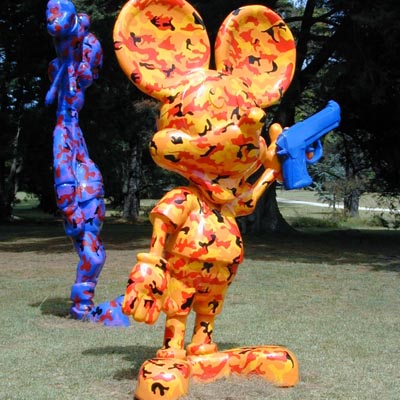
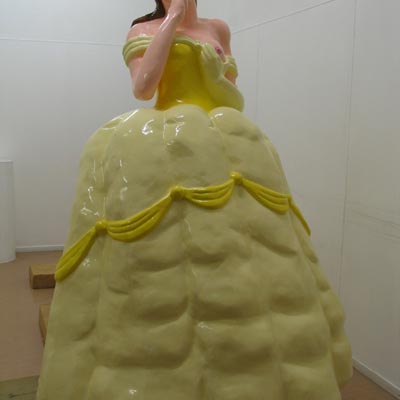
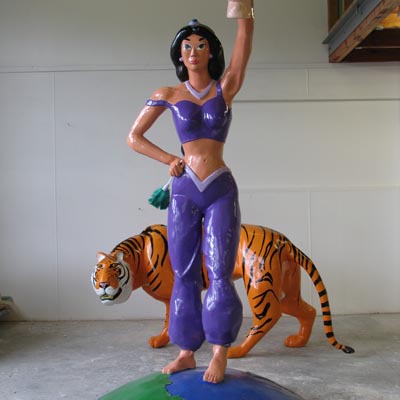
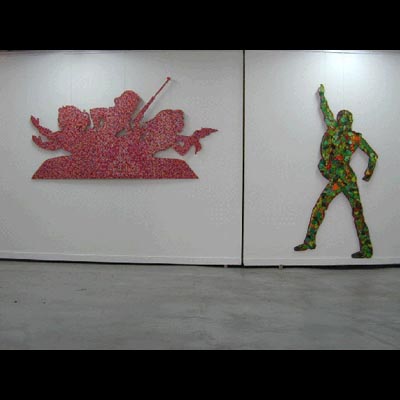
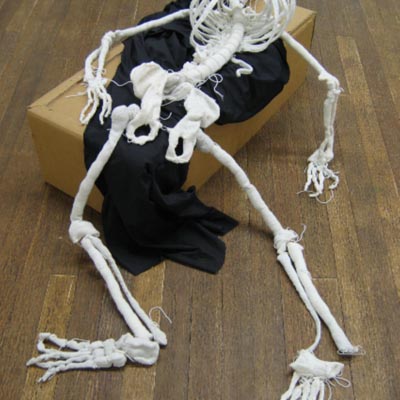
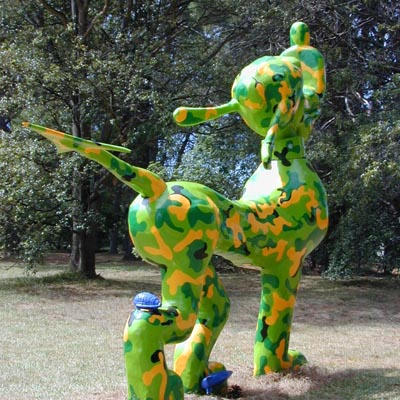
My work is driven by two distinct theoretical concerns. An ongoing interest in developments in general cultural politics related to commodities and value, and feminist interventions in art. Debbie Does Disney follows up on ideas of cultural imperialism in commodity form and enacts the debate: value over aesthetics.
In Revenge of the Crystal,1 Baudrillard sets out to explain our relationship to different types of objects. He explains these relationships through the psychoanalytic theories of fetish, castration and substitution, a replacement for and a longing to return to a point of origin. The bygone object and the attendant sentimentality attached to it, are symptomatic of that longing, while the gadget (an ipod shuffle for example or an automatic can opener) are connected to us through use. Baudrillard describes the state of play within capitalism where all commodities fall with in the categories of luxury, degradation and conspicuous consumption. Continuity is assured to the collector through ownership.
As capitalism has evolved, more and more new forms of commodity live for a moment then are discarded without delay. The pure commodity form is one that obeys the law of planned obsolescence, over and over again almost instantaneously, worn out by the time you have unwrapped the package. The Pure commodity comes without the slightest vestige of functionality. It obeys only the laws of commodity: new-instantly-old. Movie merchandise is the prime example of the pure commodity form. It just exists, without use, and without history, and then you forget about it. It sits in a drawer, taking up space, a coloniser of overlooked spaces If the pure commodity form is without history then it does not assure the collector of a connection to the past. What is our relationship to these objects?
This is a fantasy that only ever existed in the Disney version of childhood and in the la la land of Hollywood. Disney merchandise is the prime example of the way commodities authenticity and lineage are created in the company itself. The myths of creation attributed to Walt ignore the workforce of hundreds of (albeit Disney) trained animators, imaginers and cleanup artists. Insider jokes from one movie to the next blur any reference to a point of origin, (everyone laughs anyway). The stories of Cinderella, Snow White and Sleeping Beauty were moral tales designed to illustrate the consequences of bad behaviour. Greed and envy are replaced by a banal formula-, now selling toxic waste to China.
Disney has translated these horrific moral tales, into sentimental and banal tripe so they can be used to sell other commodities ad infinitum. Here is a truncated list of available merchandise in the Princess range; bedspreads and canopies, pencils, rulers, makeup, computers, dolls and figurines. These are designed to encourage the child to sit, but not for the child to do. All of the merchandise Disney produces; become collector’s items just the same.
More than any collector of contemporary kitsch could ever hope for.
1. Baudrillard, Jean. The Revenge of the Crystal: On the Modern Object and Its Destiny, Pluto Press, Sydney. 1990